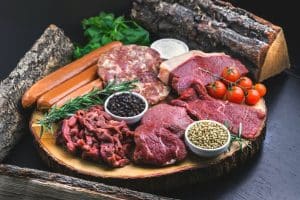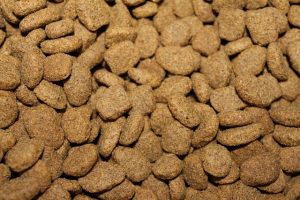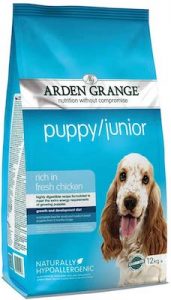Dog biscuits and canned food have been the main meals for our dogs for many years, but this very different from what their wild ancestors would have eaten. In recent years, many people have turned to feeding their dogs raw pet food.
If you are getting a puppy and you are thinking about feeding your new puppy a raw diet, or you are just curious, then here are some of the most common myths that you should consider before you make a final decision.
Ingredients
Many people are worried about starting their puppy on a raw diet because they think that they may get ill from harmful bacteria. However, the chances of this are very small because dogs usually have a stronger disposition compared to humans, so they are less likely to fall sick from eating raw food compared to humans. One benefit of feeding your dog a raw diet is that you know exactly what is in their food. Commercial pet food can contain harmful and nutritionally empty elements, which are poor quality and often trigger allergies.
Maintaining a Healthy Weight
Commercial pet food usually contains a lot of fillers, which are often composed of carbohydrates such as rice or potato. Although these are okay in small amounts, when they bulk up most of your dog’s meal, the extra carbs could lead to weight gain. They are described as an unhealthy ingredient because they offer little to no nutritional value and could be replaced by higher quality ingredients, which is why raw food can be a great option for overweight pets and health-conscious owners.
Complete Versions Available to Purchase
One of the main things that puts people off feeding their puppy raw dog food is the hassle and the time it takes to make and prepare the meals. Fortunately, due to the popularity of raw pet food, there are now reputable companies such as Bella & Duke that offer complete, readymade versions. To help you get your head around feeding your puppy a raw diet, you can check out their raw feeding guide for puppies. Reading the raw feeding guide for puppies will ensure that you give your pup the very best start in life. Once you’re sure raw food is best for your pup, order a delivery of pre-prepared food, straight to your door.
Positive Responses from Owners
The main reason that raw pet food is so in demand and has become so popular is due to the positive responses from pet owners. If this diet did not benefit their furry friends, then the world wouldn’t be so aware of this diet. Many pet owners claim that feeding their pet raw food makes their coat healthier and glossier, reduces the amount of stool the dog produces and gives them more energy. Raw food can sometimes help with food-related allergies, too, as grains in commercial pet food are known to cause allergies.
Homemade Raw Food Can Cause Nutrition Deficiencies
If you don’t buy a readymade raw diet for your puppy and you choose to feed them homemade pet food, then you could put your pooch at risk of becoming malnourished. Nutritional deficiencies won’t appear in your pup immediately after putting them on a raw diet, which means their growth and development can be affected. Many pet nutritionists are worried that homemade raw diets will be lacking in essential minerals, like phosphorous and calcium. This is why pre-prepared raw dog food from a reputable brand is the solution.
DIY Raw Food is Time-Consuming and Expensive
Again, if you don’t purchase ready-made raw meals for your puppy, then feeding them a raw diet will require a lot of time and preparation. You will need to purchase all of the individual ingredients and you will only be able to make meals a few days in advance. This is because the meat will only stay fresh for a short period of time. Buying all of the ingredients individually can also cost a lot of money. For a developing puppy, these costs will continue to increase as they grow, and getting the diet right is vital.
Even though most of the feedback from owners is positive, some pets do experience issues when they are put on a raw diet. This mainly consists of digestive issues, such as excessive wind and diarrhoea. This won’t affect all dogs, but if your puppy is one of them, then it can be very worrying and distressing for the young dog. If your dog has an underlying medical condition that you are not aware of, a raw diet may not be suitable due to the high amount of protein.
Before you choose to feed your new puppy a raw diet, you need to make sure you know what food they were being fed previously. You should also speak to your vet to discuss the best way to make the transition to raw food.



